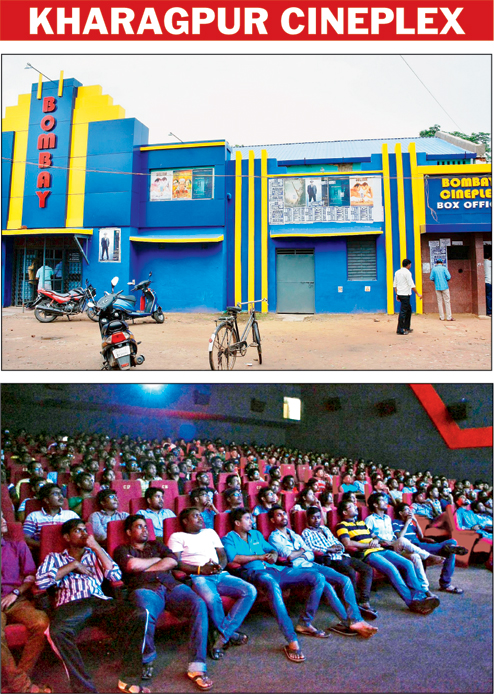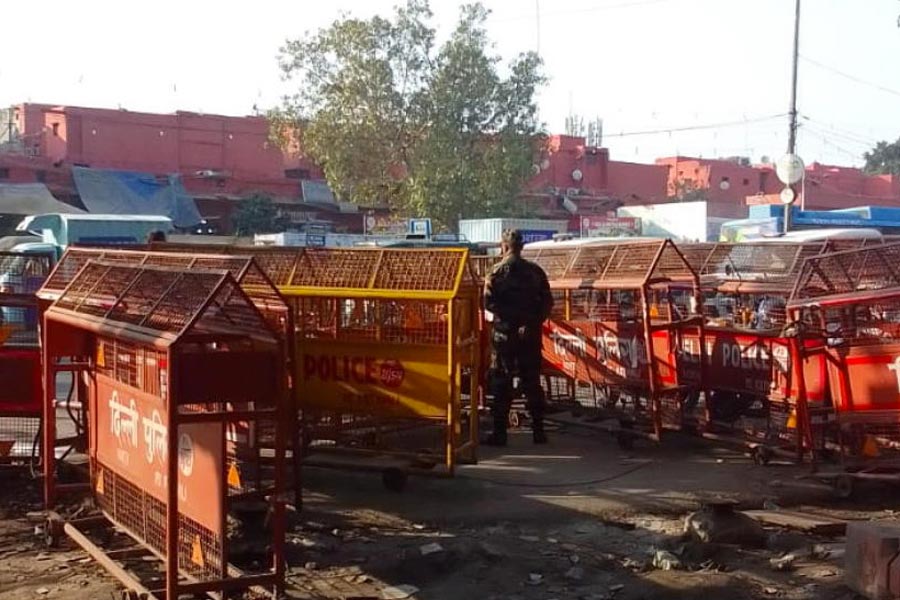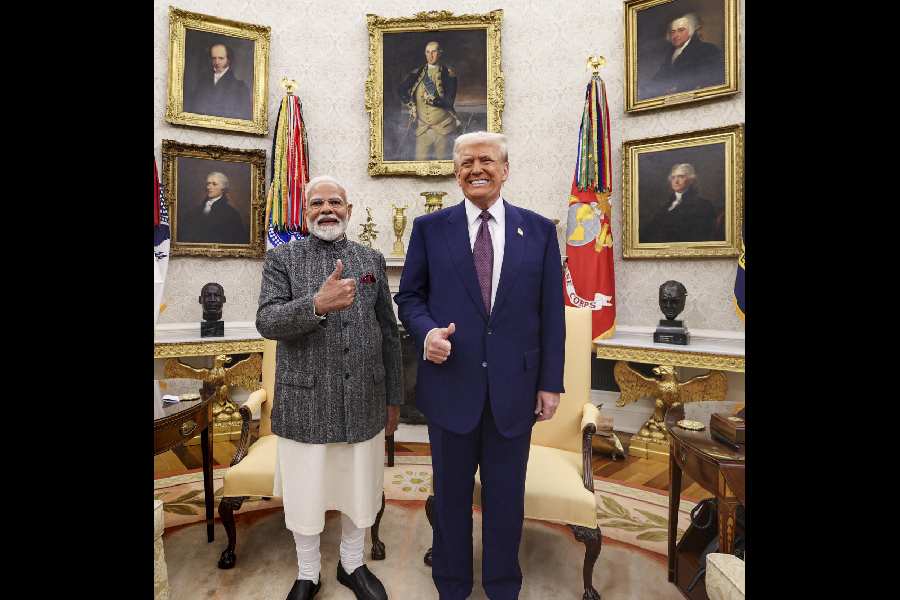
Kharagpur, July 29: Seventy-six-year-old Bombay Cinema has woken up to the times.
Adorning a new signboard that says Bombay Cineplex, the oldest cinema in Kharagpur has been turned into a multiplex, complete with air-conditioning, modern audio-visual systems and a food court.
The revamp appears to be a success, with the audience queues getting longer and the losses coming down.
"People in Kharagpur now have a place to go to with family and friends and enjoy films," said Aswin Gokuldas, the 70-year-old owner of the hall.
The transition from a cinema hall to a cineplex, like in most other towns in the country, was necessitated by the changing tastes of the people.
Kharagpur has a substantial young populace because of the IIT.
Earlier, six of Kharagpur's eight single-screen theatres had to be shut down because of mounting losses and fewer viewers.
"Even latest hits ran to half-empty halls. From the third day, a film would have hardly 30 viewers in a hall with a capacity of 680," said Amrish Gokuldas, Aswin's son.
Contrary to Calcutta's single-screen theatres, which fell prey to multiplexes, the six halls in Kharagpur shut down because there were not enough family viewers, even with low-priced tickets.
"The halls were frequented by rural and labour-class people. We could not raise the ticket prices beyond Rs 30 or Rs 50, otherwise even this section would not come," Amrish said.
Recalled Sudipto Palit, a businessman who was one of the partners at Miloni Cinema: "The hall was set up in the late 90s. But two decades later, the advent of pirated DVDs forced us to close it down."
Hall owners said students and young people often rued that Kharagpur did not have a cineplex. When a much-awaited film released, students used to go to Jamshedpur, over 100km away, and spend the entire day there.
Halls in Kharagpur lacked air-conditioning, had broken seats, some of which were infested with bugs, and the audio-visual quality was poor.
"We knew there was a large section of the 3 lakh population that would respond to the changed concept," Amrish said.
For the owner of Bombay Cinema, the change was a major decision.
The cost of the transformation came to approximately Rs 50 lakh and took 10 months.
Instead of three shows a day, the cinema is now screening nine. Five films are being screened daily. "People are willing to pay the increased ticket prices of Rs 80 and Rs 120," the owner said.










